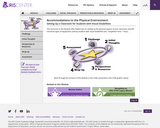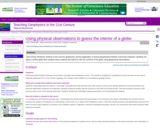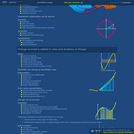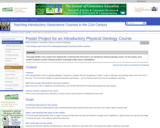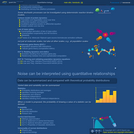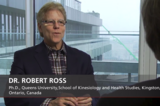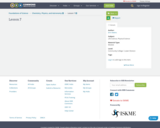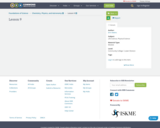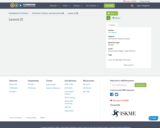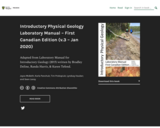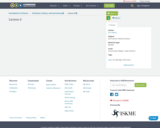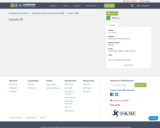The class is divided into small groups of three or four students. Each group is given a globe approximately 1 foot in diameter and asked to formulate a hypothesis for the structure and/or composition of the interior of the globe without looking inside it. Students are provided with several tools with which to analyze the globe, including acoustic sensors (their ears), magnets, paperclips (susceptible to magnetism), strip thermometers, small light bulbs with 9 volt batteries and wires.
Each globe has been designed by the instructor to highlight one or more aspects of geophysics. In the Acoustic Globe, various objects are added to the globe that will generate vibrations when the globe is shaken. These may include pennies, nuts, bolts, glass marbles, or ball bearings. The vibrations generated are analogous to seismic waves generated by a sledge hammer, a shot gun blast, or an earthquake. The seismic waves are recorded at the land surface by a seismometer, or in this case the students' ear drums, and an interpretation is generated. Advanced globes can contain cardboard dividers with small holes that allow the passage of all or some of the internal objects. Students can then interpret the internal structure of the globe.
In the Magnetic Globe, magnets or strips of iron are taped to the inside surface of the globe. The students will use magnets and paperclips to identify changes in the magnetic field of the globe caused by the heterogeneous composition of the surface of the globe, which is analogous to a magnetic survey. This globe could be combined with the Acoustic Globe if some of the objects inside the globe contain iron and some do not.
To create a Thermal Globe, the instructor can fix a gel cool pack to the inside wall of the globe and place the globe in a freezer until an hour before class. Students will used the strip thermometer to map regions of different temperature along the surface of the globe which may be used to infer convective processes occurring within the globe. This globe could easily be combined with either of the previous globes.
Finally, a Conductive Globe is designed by stringing the interior of the globe with wires of different compositions (copper, soldering wire, aluminum foil). The ends of each wire are connected iron nails which extend through the globe and are exposed on the globe surface. When the student completes the circuit using the wire, the 9 volt battery and the small light bulb, the light bulb will turn on. The intensity of the light will be different for each different type of conducting material. Through experimentation, the students can determine regions of homogeneous composition on the surface of the globe similar to an electrical conductivity or resistivity survey.
At the end of the exercise, each team will give an oral presentation to the class that describes their globe. Students should describe:
the methods used to investigate the globe,
the findings of their investigation; and
their interpretation of the interior of the globe.
Students should also discuss one way the same methodology could be used to explore the interior of the Earth.
This activity has minimal/no quantitative component.
(Note: this resource was added to OER Commons as part of a batch upload of over 2,200 records. If you notice an issue with the quality of the metadata, please let us know by using the 'report' button and we will flag it for consideration.)
